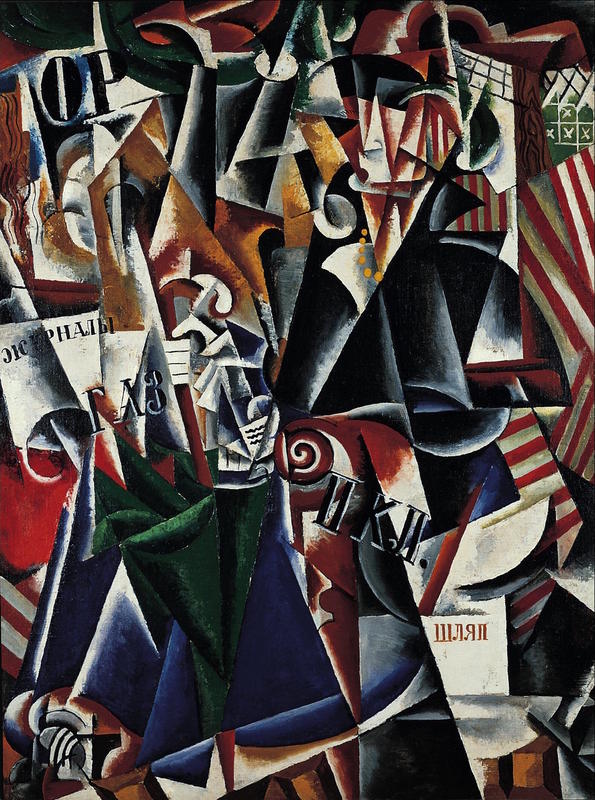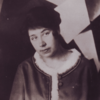More about The Traveler

Contributor
Lyubov Popova had the luxury to gallivant around Europe, but she did so with Russia in the back of her mind.
The Traveler represents a turning point in Popova’s career, wherein after years of studying art she leaped into creating her own politically charged art in Moscow, at the heels of the 1917 revolution. With clear influences from Paris and Italy, The Traveler is consequently placed squarely in the realm of the Russian hybrid camp of Cubo-Futurism. The painting features a fragmented self-portrait of Popova wearing a yellow necklace and high-collared cape along with the Russian words for “magazines," “danger zones," and “natural gas."
Being at the forefront of the Cubo-Futurism meant that she was one of the only women in her social circle. Although revolutionary Russia was progressive, it was still a boys' club; and the femme was not embraced. Her travel companion and fellow artist Vera Mukhina gave her a seemingly backhanded compliment; saying, “Despite all her femininity, she had an incredibly sharp eye for life and art." Brilliant as she was confident in her uniqueness, Popova herself boasts that by 1914 she was working completely independent of the influence of Parisian Cubism.
A key exhibition that solidified her place among the great Russian abstract schools was Tramway V, when artists from Vladimir Tatlin’s Constructivist school and Kazimir Malevich’s Suprematist school united, with art focusing on the egalitarian and industrial Russia they envisioned. Tramway V hoped to attract viewers with its title, invoking the symbol of industrial civilization developing in Russia. In Tramway V, as well as the artistic group that congregated in Popova’s family-owned Moscow apartment, she met with artists like the Vesnin brothers who would be her lifelong friends.
Popova’s familial life allowed her to participate in revolutionary art for the masses while standing in a place of immense privilege. In a letter to her former governess, Popova alludes to the immense wealth of her family, saying that the Vesnin brothers will design a chapel on her family’s property to commemorate the 100th anniversary of her family’s textile factory. The source of her personal wealth became her tool for revolutionary art when she began to lean towards Constructivism. With the goal of producing easily accessible and reproducible art, textiles became her choice medium.
Sources
- "Exposition Tramway V." Wikipedia. July 26, 2018. Accessed October 01, 2018. https://fr.wikipedia.org/wiki/Exposition_Tramway_V.
- "Luibov Popova." InCoRM. 2010. Accessed October 01, 2018. http://www.incorm.eu/popova.html.
- Sarabianov, Andrei D. "Lyubov Sergeyevna Popova." Encyclopædia Britannica. May 21, 2018. Accessed October 01, 2018. https://www.britannica.com/biography/Lyubov-Sergeyevna-Popova.
- "The Traveler." Norton Simon Museum. January 01, 1970. Accessed October 01, 2018. https://www.nortonsimon.org/art/detail/M.1967.11.P/.











